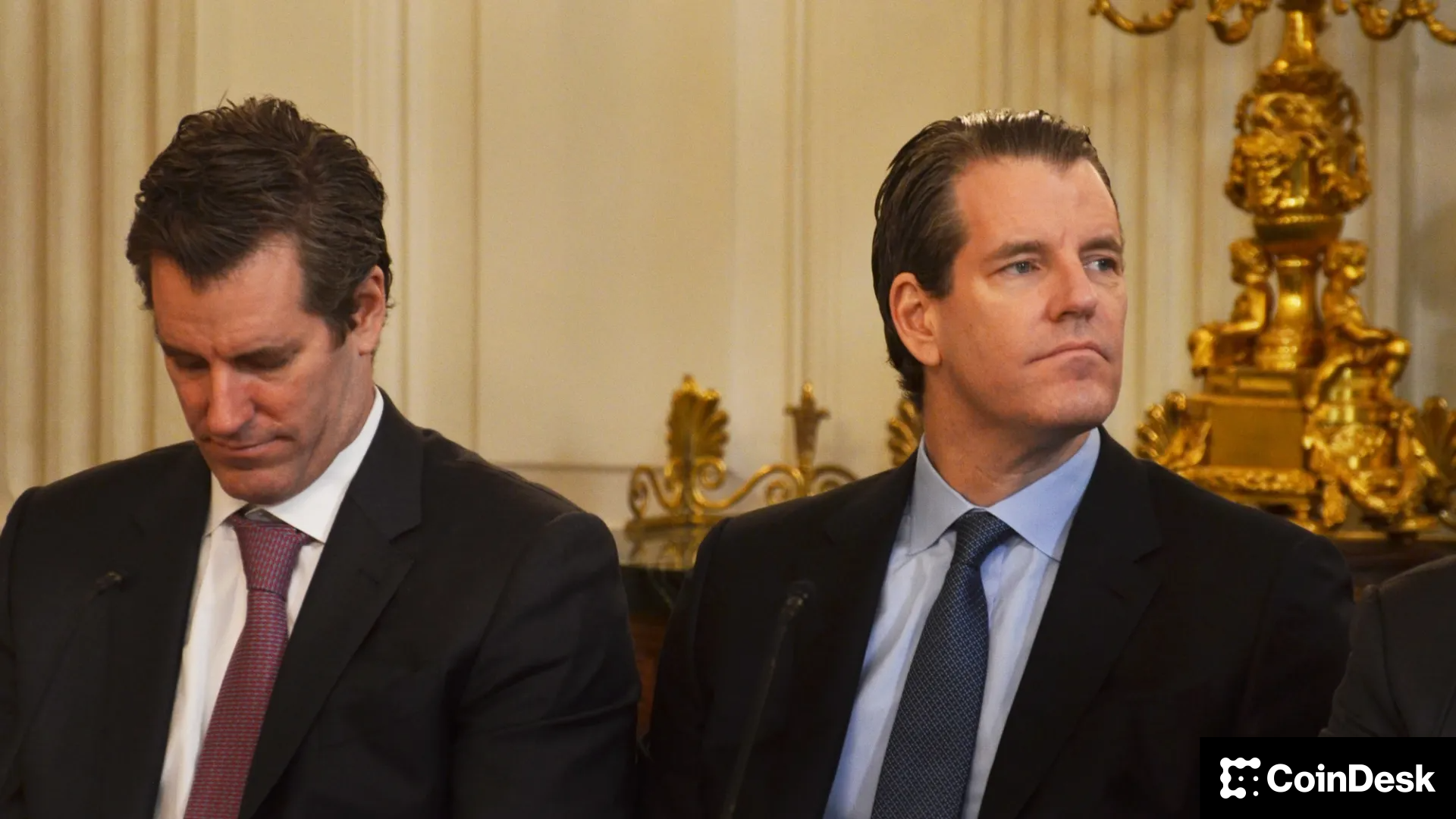Uncategorized
Can Non-USD Stablecoins Compete?

Stablecoins continue growing into a pillar of both the cryptocurrency world and the global financial system. The market has already surpassed $235 billion, showcasing that people have faith in the future of these assets.
Currently, two USD-backed stablecoins (USDT and USDC) have about 90% of the market. The rest of the top-10, including USDe and PYUSD, are all dollar-denominated. Euro-based stablecoins have little market share by comparison. Why is that?
There are many discussions around regulation, interoperability, and integration with TradFi. However, the single most important factor is liquidity. Without deep and sustainable liquidity, no stablecoin can gain mass traction, and no amount of regulatory clarity will change that.
What’s the Issue With Non-USD Stablecoins?
Let’s take the Euro as an example. EUR-backed stablecoins have existed for years at this point, yet they remain barely used. Mainly that’s because of liquidity challenges. That’s what ultimately determines whether a stablecoin can become a widely used financial tool.
For years now, USD-backed stablecoins like USDT and USDC have been the dominant force in this landscape, acting as the primary source of liquidity in lending pools and trading pairs. USD-backed stablecoins have deep liquidity, high trading volumes, and extensive integration across CeFi/DeFi platforms.
In contrast, euro (and other non-USD) stablecoins suffer from a lack of market mechanisms that could sustain them. There simply aren’t enough trading pairs, users, and financial instruments built around them to create a proper liquidity ecosystem like what the USD stablecoins have.
One of the key reasons for this liquidity gap is that centralized market makers do not see enough financial incentive to provide liquidity for euro stablecoins. It simply isn’t profitable enough for them. So they prioritize other assets, leaving EUR-backed stablecoins on the backfoot.
This isn’t just a matter of preferences — it’s a more fundamental issue that’s economic in nature. If market makers can’t make a decent return on providing liquidity for these assets, they won’t allocate capital towards them.
So, how can this be changed?
Is Regulation the Key or Just a Side Factor?
An argument can be made that if other jurisdictions get ahead in terms of establishing clear-cut rules, non-USD stablecoins will become a lot more attractive. The introduction of MiCA regulations in the EU, for example, has paved the way for compliant EUR-backed stablecoins such as EURC, turning them into an increasingly viable alternative to consider when integrating with TradFi.
To some extent, I agree. As various jurisdictions worldwide keep moving towards better regulation of digital assets, we can very well expect more stablecoins pegged to local currencies to start cropping up. In Asia, the Middle East, Latin America — regions that would be inclined to use such assets to improve their financial stability. Besides which, it would also help them lower the dependency on the U.S. dollar.
We actually have supporting examples here, like Singapore’s XSGD or Switzerland’s XCHF. Hong Kong also launched an HKD-pegged stablecoin in December 2024. The trend seems clear.
However, regulation alone is not the deciding factor. EUR-backed stablecoins existed before MiCA came along. And, it’s still unclear whether the framework will ultimately help or hinder their adoption in the long run. MiCA could act as a kind of “restriction” on USD-backed stablecoins in Europe. Potentially, this gives euro stablecoins an unfair advantage rather than making them genuinely competitive on their own merits.
And at the end of the day, regulation cannot solve the more fundamental issue of liquidity. Without it, no regulatory framework can make a stablecoin viable enough for broad use. So, the question is: how can we create liquidity for non-USD stablecoins?
Addressing Liquidity Constraints
To put things into perspective, the market capitalization of USDT and USDC stand at $141 billion and $56 billion, respectively. By comparison, euro-based stablecoins like EURC or EURS barely go above $100 million. The sheer gap is obvious, and it directly impacts their usability. That’s fewer trading pairs, fewer DeFi integrations, and ultimately, less incentive for traders and institutional players to adopt them. As a result, they can’t become mainstream assets.
A case could be made for the EURe, which I personally use a lot and find to be the most convenient euro stablecoin for real-world application. Even so, the broader non-USD stablecoin market still faces the same challenges: limited adoption, fewer integrations, and a long way to go before they can compete with dollar-backed counterparts.
One possible solution lies in developing more effective liquidity algorithms for non-USD stablecoins. Reliance on professional market makers has proven ineffective, so a new approach is necessary, with mechanisms that can ensure strong liquidity without relying entirely on those parties.
A more effective approach, to my mind, would be to first establish deep liquidity pools between USD and non-USD stablecoins. This is the most practical way to ensure smooth conversions, as it would directly address the core issue. But it requires refining automated market maker (AMM) algorithms to make liquidity provision more efficient and attractive for providers.
The Path to Viable Non-USD Stablecoins
What matters most is how much liquidity providers can earn. If the incentives are there, liquidity will improve, and adoption will naturally follow. This isn’t just about attracting more capital — it’s about restructuring liquidity provision in a way that ensures long-term, sustainable profits.
Without improvements to the infrastructure, euro stablecoins and their counterparts will continue to lag behind, despite their potential. Stablecoins are only as strong as their liquidity. The key is building models that make providing liquidity profitable — because once the financial incentives align, everything else will fall into place.
Looking ahead, I can see non-USD stablecoins gaining a competitive edge in specific use cases, such as cross-border remittances, on-chain forex trading, and decentralized lending. Businesses that operate globally but need to manage cash flows in multiple currencies could benefit from borrowing non-USD stablecoins while keeping their treasuries in USD.
Additionally, liquidity pools that facilitate stablecoin swaps between different fiat denominations could serve as stores of value, potentially laying the foundation for a more decentralized global financial system.
Business
Crypto Trading Firm Keyrock Buys Luxembourg’s Turing Capital in Asset Management Push

Crypto trading firm Keyrock said it’s expanding into asset and wealth management by acquiring Turing Capital, a Luxembourg-registered alternative investment fund manager.
The deal, announced on Tuesday, marks the launch of Keyrock’s Asset and Wealth Management division, a new business unit dedicated to institutional clients and private investors.
Keyrock, founded in Brussels, Belgium and best known for its work in market making, options and OTC trading, said it will fold Turing Capital’s investment strategies and Luxembourg fund management structure into its wider platform. The division will be led by Turing Capital co-founder Jorge Schnura, who joins Keyrock’s executive committee as president of the unit.
The company said the expansion will allow it to provide services across the full lifecycle of digital assets, from liquidity provision to long-term investment strategies. «In the near future, all assets will live onchain,» Schnura said, noting that the merger positions the group to capture opportunities as traditional financial products migrate to blockchain rails.
Keyrock has also applied for regulatory approval under the EU’s crypto framework MiCA through a filing with Liechtenstein’s financial regulator. If approved, the firm plans to offer portfolio management and advisory services, aiming to compete directly with traditional asset managers as well as crypto-native players.
«Today’s launch sets the stage for our longer-term ambition: bringing asset management on-chain in a way that truly meets institutional standards,» Keyrock CSO Juan David Mendieta said in a statement.
Read more: Stablecoin Payments Projected to Top $1T Annually by 2030, Market Maker Keyrock Says
Business
Crypto Trading Firm Keyrock Buys Luxembourg’s Turing Capital in Asset Management Push

Crypto trading firm Keyrock said it’s expanding into asset and wealth management by acquiring Turing Capital, a Luxembourg-registered alternative investment fund manager.
The deal, announced on Tuesday, marks the launch of Keyrock’s Asset and Wealth Management division, a new business unit dedicated to institutional clients and private investors.
Keyrock, founded in Brussels, Belgium and best known for its work in market making, options and OTC trading, said it will fold Turing Capital’s investment strategies and Luxembourg fund management structure into its wider platform. The division will be led by Turing Capital co-founder Jorge Schnura, who joins Keyrock’s executive committee as president of the unit.
The company said the expansion will allow it to provide services across the full lifecycle of digital assets, from liquidity provision to long-term investment strategies. «In the near future, all assets will live onchain,» Schnura said, noting that the merger positions the group to capture opportunities as traditional financial products migrate to blockchain rails.
Keyrock has also applied for regulatory approval under the EU’s crypto framework MiCA through a filing with Liechtenstein’s financial regulator. If approved, the firm plans to offer portfolio management and advisory services, aiming to compete directly with traditional asset managers as well as crypto-native players.
«Today’s launch sets the stage for our longer-term ambition: bringing asset management on-chain in a way that truly meets institutional standards,» Keyrock CSO Juan David Mendieta said in a statement.
Read more: Stablecoin Payments Projected to Top $1T Annually by 2030, Market Maker Keyrock Says
Business
Gemini Shares Slide 6%, Extending Post-IPO Slump to 24%

Gemini Space Station (GEMI), the crypto exchange founded by Cameron and Tyler Winklevoss, has seen its shares tumble by more than 20% since listing on the Nasdaq last Friday.
The stock is down around 6% on Tuesday, trading at $30.42, and has dropped nearly 24% over the past week. The sharp decline follows an initial surge after the company raised $425 million in its IPO, pricing shares at $28 and valuing the firm at $3.3 billion before trading began.
On its first day, GEMI spiked to $45.89 before closing at $32 — a 14% premium to its offer price. But since hitting that high, shares have plunged more than 34%, erasing most of the early enthusiasm from public market investors.
The broader crypto equity market has remained more stable. Coinbase (COIN), the largest U.S. crypto exchange, is flat over the past week. Robinhood (HOOD), which derives part of its revenue from crypto, is down 3%. Token issuer Circle (CRCL), on the other hand, is up 13% over the same period.
Part of the pressure on Gemini’s stock may stem from its financials. The company posted a $283 million net loss in the first half of 2025, following a $159 million loss in all of 2024. Despite raising fresh capital, the numbers suggest the business is still far from turning a profit.
Compass Point analyst Ed Engel noted that GEMI is currently trading at 26 times its annualized first-half revenue. That multiple — often used to gauge whether a stock is expensive — means investors are paying 26 dollars for every dollar the company is expected to generate in sales this year. For a loss-making company in a volatile sector, that’s a steep price, and could be fueling investor skepticism.
-

 Business11 месяцев ago
Business11 месяцев ago3 Ways to make your business presentation more relatable
-

 Fashion11 месяцев ago
Fashion11 месяцев agoAccording to Dior Couture, this taboo fashion accessory is back
-

 Entertainment11 месяцев ago
Entertainment11 месяцев ago10 Artists who retired from music and made a comeback
-

 Entertainment11 месяцев ago
Entertainment11 месяцев ago\’Better Call Saul\’ has been renewed for a fourth season
-

 Entertainment11 месяцев ago
Entertainment11 месяцев agoNew Season 8 Walking Dead trailer flashes forward in time
-

 Business11 месяцев ago
Business11 месяцев ago15 Habits that could be hurting your business relationships
-

 Entertainment11 месяцев ago
Entertainment11 месяцев agoMeet Superman\’s grandfather in new trailer for Krypton
-

 Entertainment11 месяцев ago
Entertainment11 месяцев agoDisney\’s live-action Aladdin finally finds its stars




